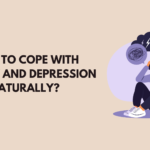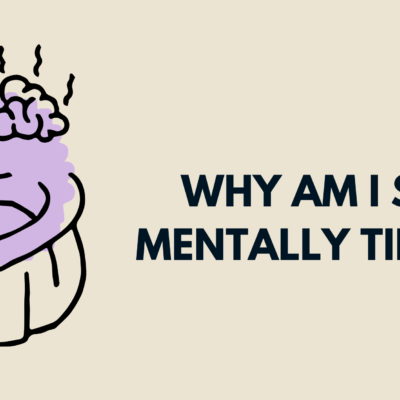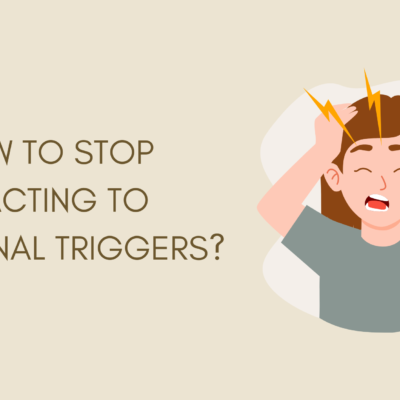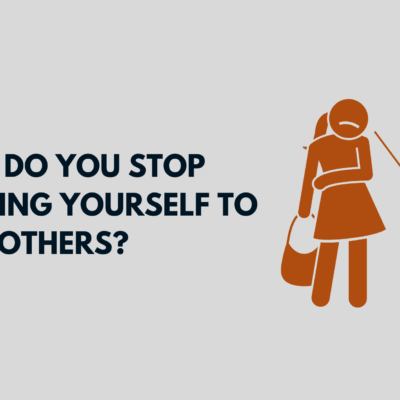How to Stop Suppressing Emotions: Most of us, at some point in life, have been told to “stay strong,” “don’t cry,” or “move on.” While these phrases may sound encouraging on the surface, they often translate into one dangerous message: suppress your emotions.
Emotional suppression—consciously or unconsciously pushing away thoughts and feelings—is a coping mechanism that may seem helpful in the short term but can be deeply damaging over time. It leads to anxiety, depression, physical illness, emotional numbness, and broken relationships. The good news? You can break this cycle.
This guide explores how to stop suppressing emotions and start experiencing, expressing, and healing them in a healthy, empowering way.
Also Read:
1. Understand Why You Suppress Emotions
The first step is awareness.
Common reasons why people suppress emotions:
- Fear of vulnerability: “If I show how I feel, people will see me as weak.”
- Past trauma: Growing up in an environment where emotions were unsafe or punished.
- Cultural or gender norms: “Real men don’t cry” or “Good girls don’t get angry.”
- Desire to avoid conflict: Suppressing to keep peace in relationships.
- Shame and guilt: Feeling bad for even having certain emotions.
Once you identify the root of your emotional suppression, it becomes easier to dismantle it. Ask yourself: Who taught me that emotions were dangerous? What do I fear will happen if I express myself honestly?
2. Recognize the Signs of Suppression
Emotional suppression doesn’t always look like someone holding back tears. Often, it’s more subtle:
- You feel emotionally numb or “checked out.”
- You overreact to small situations—because bottled-up emotions eventually explode.
- You avoid being alone with your thoughts.
- You use distractions (food, social media, work) to avoid feeling.
- You constantly “people-please” at the cost of your own needs.
- You feel physical symptoms—tight chest, fatigue, headaches—without a clear cause.
These are all signs your body and mind are carrying more than you allow yourself to process.
3. Allow Yourself to Feel Without Judgment
One of the biggest barriers to emotional freedom is the belief that certain emotions are “bad.”
Anger, sadness, jealousy, fear—they all serve a purpose. They are messengers from within, asking for your attention. The key is to feel them without immediately acting on them or pushing them away.
Try this practice:
- Sit in a quiet space.
- Take a few deep breaths.
- Ask yourself, What am I feeling right now?
- Give the feeling a name: I feel hurt. I feel afraid. I feel disappointed.
- Say it out loud or write it down.
- Notice where the emotion sits in your body.
- Allow it to be there, without rushing to “fix” it.
Remember, feeling is not the same as collapsing under your feelings. You can be with an emotion without drowning in it.
4. Use Journaling as an Emotional Outlet
Journaling is a powerful, private way to give space to your emotions—especially if you’re not ready to speak them aloud.
Prompts to get started:
- What emotion am I avoiding lately?
- What’s something I wish I could say to someone but haven’t?
- When did I first learn to hide how I feel?
- What would happen if I let myself cry/rage/be honest right now?
Let it be messy. Raw. Unfiltered. This is for you and you alone. The act of putting emotions into words moves them from the emotional center of the brain into the logical center, helping you gain clarity and release.
5. Talk About It—But Choose Your Space Wisely
You don’t have to share your emotions with everyone—but choosing even one safe person can be healing.
This could be:
- A therapist or counselor
- A close friend or partner
- A support group
- Even a voice memo to yourself
Start small: “I’ve been holding a lot in lately, and I want to practice being honest.” Let them know you don’t need them to fix you—just to listen.
Learning to verbalize your feelings in a safe space teaches your nervous system that it’s okay to express. Over time, it becomes easier and more natural.
6. Stop Shaming Yourself for Feeling
One of the most painful patterns of emotional suppression is the internal dialogue that comes with it:
- “I shouldn’t feel this way.”
- “It’s not that big of a deal.”
- “I should be over this by now.”
These thoughts only reinforce suppression.
Try replacing them with:
- “It makes sense that I feel this way.”
- “My emotions are valid, even if I don’t fully understand them.”
- “Feeling is human. There’s nothing wrong with me.”
This self-compassionate approach rewires how you relate to your inner world and lays the foundation for emotional safety.
7. Move Your Body to Release Stored Emotions
Emotions are not just mental—they are physical. When you suppress them, they get stored in the body, often leading to tight muscles, chronic pain, or fatigue.
Try:
- Gentle stretching or yoga (especially hip-openers and heart-openers)
- Dancing freely to music alone in your room
- Walking in nature while letting thoughts rise and fall
- Breathwork or somatic shaking
Movement allows stuck energy to move. You don’t always need to “talk it out”—sometimes you just need to move it through.
8. Relearn How to Cry, Scream, and Feel Safely
We often suppress emotions because we were never taught how to release them safely.
If you feel a wave coming on—let it.
- Crying is not a weakness; it’s a detox of emotion.
- Screaming into a pillow or out in nature can relieve stored rage.
- Punching a pillow or throwing ice in the shower can be a healthy outlet for anger.
The key is to let it out in a way that’s safe for you and others. Create a container where your body knows it can express.
9. Set Boundaries That Protect Your Emotional Health
Often, people suppress emotions because they feel overwhelmed by others’ needs, judgments, or expectations.
Boundaries are not walls; they are filters that protect your peace.
Start saying:
- “I need time to process before I respond.”
- “I’m not comfortable with this conversation right now.”
- “That comment hurt me—can we talk about it?”
Each boundary you set is a step toward emotional liberation. You teach others how to treat you by how you treat yourself.
10. Practice Emotional Expression Daily
Like any muscle, your emotional capacity strengthens with regular use. You don’t have to wait for a crisis to connect with your feelings.
Daily check-in ideas:
- Morning: “How do I feel about today?”
- Midday: “What emotion am I carrying in my body right now?”
- Night: “What feelings came up today that I ignored or downplayed?”
Even just 5 minutes a day of emotional connection rewires your brain to see emotions not as threats, but as companions.
11. Seek Professional Help if You Feel Stuck
If suppression has become deeply ingrained—especially from trauma—therapy can be life-changing.
Modalities that are particularly effective:
- EMDR (Eye Movement Desensitization and Reprocessing) for trauma release
- Somatic therapy to reconnect with bodily emotions
- Internal Family Systems (IFS) for understanding inner emotional parts
- Cognitive Behavioral Therapy (CBT) for challenging emotional avoidance
You don’t have to heal alone. Sometimes, the most powerful emotional expression is asking for help.
Conclusion: From Suppression to Self-Liberation
Stopping emotional suppression is not about being dramatic or constantly emotional—it’s about being honest.
It’s the difference between living a half-life and a whole one. Between saying “I’m fine” and meaning it, versus saying it out of habit. Between carrying hidden burdens and living lightly, freely, and authentically.
You were never meant to carry your feelings in silence. They are not weaknesses. They are signals. They are teachers. They are the pathway back to your truth.
Start today. One feeling at a time. You don’t need to be perfect—only present.






